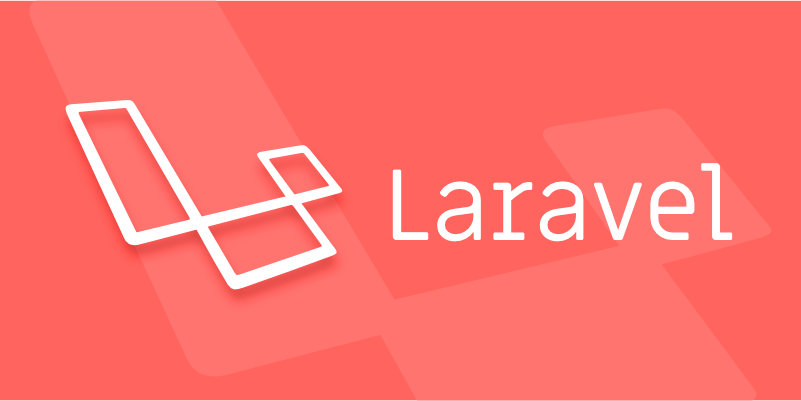The difference between Laravel Breeze and Jetstream is positioning and functionality. Breeze is a lightweight authentication package that provides login, registration, email verification and password reset functions. It is suitable for basic authentication needs. It uses Blade or Sanctum APIs, and has a simple and easy to customize structure. Jetstream is a more complete user dashboard solution, suitable for medium and large applications, supports multi-factor authentication, personal data management, team management, API Token management, and integrates Inertia.js, Vue/React, suitable for SaaS product development. Selection suggestions: Choose Breeze for a simple project, and choose Jetstream if you need team collaboration and complete functions.

Laravel Breeze and Jetstream are both certified scaffolding tools provided by Laravel, but their positioning and functions vary. If you just want to quickly build a basic project with functions such as login, registration, password reset, etc., Breeze is more suitable; if you need a more complete backend system, such as team management, profile settings, API support, etc., then Jetstream is more suitable.

What is Laravel Breeze?
Breeze is Laravel's official lightweight certification package, focusing on providing the most basic login, registration, email verification and password reset functions. It has clear structure and concise code, making it suitable for most projects that only require basic certification functions.
- Use the Blade template engine or optional API interface (with Sanctum)
- By default, only basic controllers, views, routes, and front-end components are generated
- Simple installation, low learning cost, easy to customize
For example, if you are building a blog or content management system, users only need to log in to the background to publish articles without a complex permission system, Breeze is completely enough.

What is Laravel Jetstream?
Jetstream is more fully functional by comparison and is a "out of the box" user dashboard and team management solution. It is designed for medium and large applications and provides more features required for modern web applications.
Main functions include:

- Multi-factor certification (MFA)
- User profile management (avatar, information editing, etc.)
- Team management (create team, invite members, switch teams)
- API Token Management (based on Laravel Sanctum or Passport)
- The front-end is built using Inertia.js, supports Vue or React
If you are developing SaaS products and need to support functions such as collaboration between users, permission control, etc., Jetstream can save you a lot of time.
Breeze vs Jetstream: How to choose?
Which tool to choose depends on how complex your project needs are:
? Choose Breeze if:
- Small project size
- Only basic login/registration functions are required
- Want to customize the interface and logic from scratch
- No need to use functions such as team, API token, and MFA
? Choose Jetstream if:
- Requires complete user background functions
- Projects involve multi-user collaboration or team management
- Want to directly integrate modern front-end frameworks (Vue Inertia)
- I hope to quickly implement security mechanisms such as MFA, token management, etc.
It should be noted that the installation configuration of Jetstream is slightly more complicated and has stronger front-end dependencies. Especially if you are not familiar with Inertia or Vue/React, there may be a bit of a threshold.
Basically that's it. The two tools have their own positioning, Breeze is simple and easy to use, and Jetstream has comprehensive functions. Choosing according to the actual needs of the project can help you avoid many detours.
The above is the detailed content of What is Laravel Breeze vs Jetstream?. For more information, please follow other related articles on the PHP Chinese website!

Hot AI Tools

Undress AI Tool
Undress images for free

Undresser.AI Undress
AI-powered app for creating realistic nude photos

AI Clothes Remover
Online AI tool for removing clothes from photos.

Clothoff.io
AI clothes remover

Video Face Swap
Swap faces in any video effortlessly with our completely free AI face swap tool!

Hot Article

Hot Tools

Notepad++7.3.1
Easy-to-use and free code editor

SublimeText3 Chinese version
Chinese version, very easy to use

Zend Studio 13.0.1
Powerful PHP integrated development environment

Dreamweaver CS6
Visual web development tools

SublimeText3 Mac version
God-level code editing software (SublimeText3)
 Creating Custom Validation Rules in a Laravel Project
Jul 04, 2025 am 01:03 AM
Creating Custom Validation Rules in a Laravel Project
Jul 04, 2025 am 01:03 AM
There are three ways to add custom validation rules in Laravel: using closures, Rule classes, and form requests. 1. Use closures to be suitable for lightweight verification, such as preventing the user name "admin"; 2. Create Rule classes (such as ValidUsernameRule) to make complex logic clearer and maintainable; 3. Integrate multiple rules in form requests and centrally manage verification logic. At the same time, you can set prompts through custom messages methods or incoming error message arrays to improve flexibility and maintainability.
 Working with pivot tables in Laravel Many-to-Many relationships
Jul 07, 2025 am 01:06 AM
Working with pivot tables in Laravel Many-to-Many relationships
Jul 07, 2025 am 01:06 AM
ToworkeffectivelywithpivottablesinLaravel,firstaccesspivotdatausingwithPivot()orwithTimestamps(),thenupdateentrieswithupdateExistingPivot(),managerelationshipsviadetach()andsync(),andusecustompivotmodelswhenneeded.1.UsewithPivot()toincludespecificcol
 Sending different types of notifications with Laravel
Jul 06, 2025 am 12:52 AM
Sending different types of notifications with Laravel
Jul 06, 2025 am 12:52 AM
Laravelprovidesacleanandflexiblewaytosendnotificationsviamultiplechannelslikeemail,SMS,in-appalerts,andpushnotifications.Youdefinenotificationchannelsinthevia()methodofanotificationclass,andimplementspecificmethodsliketoMail(),toDatabase(),ortoVonage
 Understanding Dependency Injection in Laravel?
Jul 05, 2025 am 02:01 AM
Understanding Dependency Injection in Laravel?
Jul 05, 2025 am 02:01 AM
Dependency injection automatically handles class dependencies through service containers in Laravel without manual new objects. Its core is constructor injection and method injection, such as automatically passing in the Request instance in the controller. Laravel parses dependencies through type prompts and recursively creates the required objects. The binding interface and implementation can be used by the service provider to use the bind method, or singleton to bind a singleton. When using it, you need to ensure type prompts, avoid constructor complications, use context bindings with caution, and understand automatic parsing rules. Mastering these can improve code flexibility and maintenance.
 Strategies for optimizing Laravel application performance
Jul 09, 2025 am 03:00 AM
Strategies for optimizing Laravel application performance
Jul 09, 2025 am 03:00 AM
Laravel performance optimization can improve application efficiency through four core directions. 1. Use the cache mechanism to reduce duplicate queries, store infrequently changing data through Cache::remember() and other methods to reduce database access frequency; 2. Optimize database from the model to query statements, avoid N 1 queries, specifying field queries, adding indexes, paging processing and reading and writing separation, and reduce bottlenecks; 3. Use time-consuming operations such as email sending and file exporting to queue asynchronous processing, use Supervisor to manage workers and set up retry mechanisms; 4. Use middleware and service providers reasonably to avoid complex logic and unnecessary initialization code, and delay loading of services to improve startup efficiency.
 Managing database state for testing in Laravel
Jul 13, 2025 am 03:08 AM
Managing database state for testing in Laravel
Jul 13, 2025 am 03:08 AM
Methods to manage database state in Laravel tests include using RefreshDatabase, selective seeding of data, careful use of transactions, and manual cleaning if necessary. 1. Use RefreshDatabasetrait to automatically migrate the database structure to ensure that each test is based on a clean database; 2. Use specific seeds to fill the necessary data and generate dynamic data in combination with the model factory; 3. Use DatabaseTransactionstrait to roll back the test changes, but pay attention to its limitations; 4. Manually truncate the table or reseed the database when it cannot be automatically cleaned. These methods are flexibly selected according to the type of test and environment to ensure the reliability and efficiency of the test.
 Choosing between Laravel Sanctum and Passport for API authentication
Jul 14, 2025 am 02:35 AM
Choosing between Laravel Sanctum and Passport for API authentication
Jul 14, 2025 am 02:35 AM
LaravelSanctum is suitable for simple, lightweight API certifications such as SPA or mobile applications, while Passport is suitable for scenarios where full OAuth2 functionality is required. 1. Sanctum provides token-based authentication, suitable for first-party clients; 2. Passport supports complex processes such as authorization codes and client credentials, suitable for third-party developers to access; 3. Sanctum installation and configuration are simpler and maintenance costs are low; 4. Passport functions are comprehensive but configuration is complex, suitable for platforms that require fine permission control. When selecting, you should determine whether the OAuth2 feature is required based on the project requirements.
 Implementing Database Transactions in Laravel?
Jul 08, 2025 am 01:02 AM
Implementing Database Transactions in Laravel?
Jul 08, 2025 am 01:02 AM
Laravel simplifies database transaction processing with built-in support. 1. Use the DB::transaction() method to automatically commit or rollback operations to ensure data integrity; 2. Support nested transactions and implement them through savepoints, but it is usually recommended to use a single transaction wrapper to avoid complexity; 3. Provide manual control methods such as beginTransaction(), commit() and rollBack(), suitable for scenarios that require more flexible processing; 4. Best practices include keeping transactions short, only using them when necessary, testing failures, and recording rollback information. Rationally choosing transaction management methods can help improve application reliability and performance.






